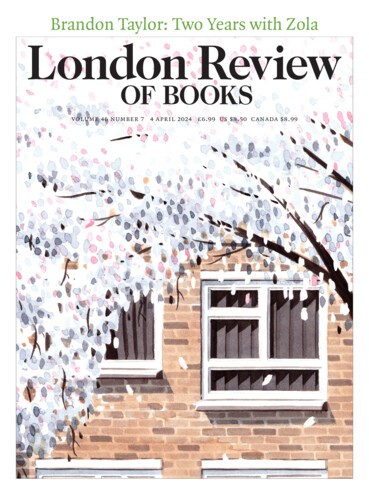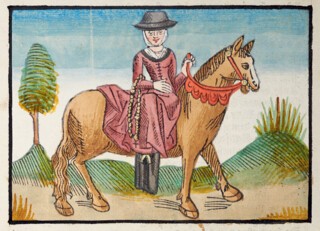One of the frustrating things about Chaucer is that the literary archive only begins at the time of his death in 1400. No earlier manuscripts containing his writings survive. This means that we don’t know how his works circulated in his lifetime, what he wanted them to look like, which of the competing versions he preferred, or even, in any detail, who his first readers were. There are a handful of allusions to Chaucer in literary sources before his death, and legal documents show that a scrivener used a copy of Troilus and Criseyde to settle a drinking debt in Southwark in 1394. In recent decades, academics have asked how we should think about the materials that do survive – in particular, the two copies of the Canterbury Tales produced by the same scribe in the early 15th century. We know the scribe was a prolific copyist of Middle English poetry, probably a man called Adam Pinkhurst, and it seems possible that he had some connection to Chaucer. The earlier of the two manuscripts, the so-called Hengwrt Chaucer (perhaps dating from the year of Chaucer’s death), has travelled from the National Library of Wales to the Bodleian Library and is the centrepiece of the exhibition Chaucer Here and Now (until 28 April). The recent collapse of the British Library’s online archives, just days after it had announced the digitisation of its own Chaucer collection, is a reminder of the precarity of digital substitutes for artefacts such as this.
The Hengwrt manuscript is as close as we can get to Chaucer, but it’s hard to be sure just how close that is. A note by the scribe at the end of Chaucer’s incomplete ‘Cook’s Tale’ reads: ‘Of this Cokes tale maked Chaucer na moore.’ But it is written in the margin, rather than across the page, suggesting that the scribe left open the possibility that he might be wrong, and that someone else might add the rest. Some historians have argued that the scribe was Chaucer’s personal copyist and literary executor, but evidence like this uncertain piece of marginalia, or the fact that the two Canterbury Tales manuscripts present the work in a different sequence, suggest that the scribe is somebody hesitantly piecing together their own idea of what Chaucer wrote.
Alongside many items from the Bodleian’s own collection, the exhibition features the famous early 15th-century copy of Troilus and Criseyde belonging to Corpus Christi College, Cambridge. Its illustrated frontispiece – an ornate image of a figure reading from a lectern or pulpit to a wealthy audience – has been reproduced many times, but there is no evidence that Chaucer ever occupied a ‘court poet’ role like the one imagined here. Rather than a glimpse into Chaucer’s world, this is an attempt to fashion an image of him as someone at home in an aristocratic culture. The manuscript was laid out to accommodate further pictures, which were never completed. Perhaps the money ran out, the buyer disappeared, or, having speculated on the venture, the publisher failed to find anyone to bid for it.
The exhibition considers competing readerly priorities from the Middle Ages to the present, developing a strand of recent scholarship of which its curator, Marion Turner, is a leading proponent. There are echoes here of Turner’s Chaucer: A European Life (2019), which examined the places with which Chaucer is associated, sometimes via his literary sources (a number of sumptuous manuscripts, including a fine illustrated Dante, are on display). The difficulty is in separating the tendentious uses to which Chaucer has been put from the writer we can discern from the work. In the shifting, centuries-long history of his reception, Chaucer has been read as both irreverent and pious, experimental and traditional, cosmopolitan and quintessentially English.
Modern women readers – from within and outside the academy – are well represented. Some feminist critics have attempted to rescue Chaucer from the charge of misogyny – their task has been helped by the recent discovery of documents suggesting that the raptus case against him concerned employment law rather than rape or abduction. Medieval manuscripts of Chaucer are filled with approving nota bene marks beside misogynistic statements by various characters, which critics have become used to dismissing as naive misreadings. But what if we are the naive readers, too readily explaining away what is unpalatable about Chaucer and his culture?
Some of the earliest printed editions at the Bodleian point to Chaucer’s future role in jingoistic representations of Englishness. By the time of Thomas Speght’s edition of the Canterbury Tales in 1598, Chaucer was established as the origin of a vernacular literary tradition. Speght takes pains to point out that he was also aristocratic – or close enough (Chaucer was a vintner’s son, but Speght’s genealogy proudly places him, via his sister-in-law, in the same family tree as English kings). Speght is also keen to suggest that, if not actually Protestant, Chaucer would have been if he’d had the chance. He went to Oxford, Speght claims (wrongly), ‘by all likelihood in Merton Colledge, with Iohn Wiclife: whose opinions in religion he much affected’. In the 19th century Chaucer emerges as a robust patriot, to be disseminated through the schools and libraries of the British Empire. The exhibition includes a children’s edition of the Canterbury Tales with a preface by the Victorian editor Frederick Furnivall, who imagines Chaucer as a boy: ‘plucky and slippy at football, hockey and other games. Cricket was not then known.’
There is another Chaucer, one to whom England does not have exclusive claim. He is represented in the exhibition by Voltaire’s version of the ‘Wife of Bath’ (taken from Dryden) as well as translations of Chaucer into languages including Arabic, Japanese, Korean and Esperanto. The Russian translation of the Canterbury Tales, published in the Soviet Union in 1980, is the size of a cigarette packet and beautifully illustrated: the final page unfolds to reveal a panorama with silvery Canterbury pilgrims riding across a nocturnal Kent. In the display cases alongside Patience Agbabi’s Telling Tales and Zadie Smith’s The Wife of Willesden are the four volumes of Refugee Tales, directed by the poet David Herd and Anna Pincus of the Gatwick Detainees Welfare Group. The project, which has been running since 2016, pairs contemporary writers with former indefinite detainees, retelling their stories and taking the Canterbury Tales as a model. It is a powerful attempt to invert the valency of those traditional notions of Englishness that are bound up with Chaucer.
Chaucer was interested in our encounters with texts. The Canterbury Tales is full of scenes in which the pilgrims offer surprising or excessive responses to the tale they have just been told. The Host praises the tale told by the Merchant as a warning against deceitful wives, ignoring its merciless skewering of a lecherous old husband; the Reeve’s impassioned response to the ‘Miller’s Tale’ is entirely to do with the way the Miller has represented carpenters. Interpretation is always unpredictable, but it takes a certain kind of imagination to willingly embrace that. The Bodleian exhibition doesn’t try to explain why Chaucer matters, but it doesn’t need to.
Send Letters To:
The Editor
London Review of Books,
28 Little Russell Street
London, WC1A 2HN
letters@lrb.co.uk
Please include name, address, and a telephone number.


